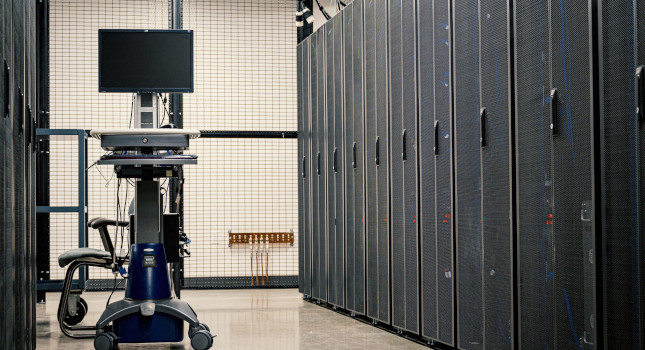A possible agent of change is the 2014 Australian Mining Prospect Award for innovative mining solutions that was won by the Columbus Group for its 3D down-the-hole, high-water-pressure-drilling system. Since the award in Sydney, October 2014, development continues with multiple applications.
The fundamentals to improve the extraction process are in applying better shale crack engineering in horizontal, compressed, fine-grain sedimentary-rock reserves. Attempting to do this from the surface, typically 6,000 meters above the target zone, can present environmental and technical extraction challenges.
This technology starts working from the surface, drilling a deep vertical hole, which is lined as the drill bores deeper. Then, the drill turns horizontally to bore into the shale, oil, or gas deposit. In addition to the main borehole, the hardware goes a step further to create a massive collection of cracks, over many layers. A 3D-printed mesh netting is deployed to reinforce the cracks and keep them open. The extreme hydraulic pressure fluid injection phase is not required with this technology.
The directional drilling ability is made possible with the pseudolite positioning package built into the 3D drilling head, which is controlled by down-the-hole software and surface software supervision. Monitoring effluent, released gases and bits of rock coming up to the surface, provides the assurance that the operation is being executed successfully, based on previous, benchmarked results.
The 3D down-the-hole drilling package can be optimized to a specific application, including appropriate large and small diameters, flexible jointed sections that are joined to accommodate tighter turns, and even the inclusion of water operated chisels to break up any rock formations. The delivered water consumption rates are demand driven by the different drilling head packages in the range of 100 to 1,000 litres/minute, typically at 20 to 100 Bar.
For oil and gas shale extraction, the 3D down-the-hole drilling head is fed with a mix of high-pressure cutting fluid, abrasive grit, and 3D-printed mesh materials. In the head, there are two high-pressure pumps and valving-system manifolds to increase the immediate water pressure (variable pressures of 20 to 100 Bar can be increased to an effective 200 to 700 Bar; higher cutting pressures are possible in specialized configurations) available for any particular series of cutting jets and to vary the amount of abrasive grit to increase the effectiveness of the water-cutting process.
3D-printed reinforcement mesh
The cracks that are created are reinforced to remain open longer by spraying 3D-printed mesh into the fissures. The mesh profiles can be printed as solid wing support riblets equipped with fine-wire screens or straw-like hollow structures that are themselves conduits buried into the rock.
As part of the connecting vertical holes, these can be lined with cured-in-place-pipes (CIPP) that are acid-resistant. A complementary pipe-placement tool pulls the CIPP lining into place. The pipe is pressed outward to the required diameter and cured by ultraviolet light from the hollow cylindrical pipe-placement tool that can operate at the same time, in the same hole, while being drilled by the 3D-drilling technology.
To round out the active system, the entire process is ultrasonically tested as the head passes along the grids to ensure that the cracks have an acceptable geometrical size and to achieve performance and compliance with this environmentally friendly fracking equivalent.
There are other applications of this technology, such as trenchless utility installations, narrow gold seam extraction, improved explosive efforts with hole shaping, safer rock bolting, and geothermal renewable energy extraction.
Environmentally better and cost-effective shale oil and gas extraction is worth considering due to the low price of oil; the added pressure of sourcing fracking sands at a high price; reliability of cement-lined pipe if threatened by acid; and possible contamination issues where injecting water is part of the traditional way to conduct fracking activities.
The potential commercial release date for the simple one-direction 3D drilling system for improved explosive effort and safer roof bolts is planned for Q1 2015. The twisting and turning unit as outlined as above could be ready by the beginning of Q3 2015.
– Don Yates heads up the R&D activities of the Columbus Group, a pursuit of more than 30 years and 1,400 projects, in automated safer mining, smarter oil and gas extraction, stormwater recycling, light rail community linking, cost-effective renewable energy, and electronic warfare strategies, receiving multiple awards recognizing these efforts. The development challenges are ongoing, exploiting the world of the Internet of everything. Edited by Eric R. Eissler, editor-in-chief, Oil & Gas Engineering, [email protected]



